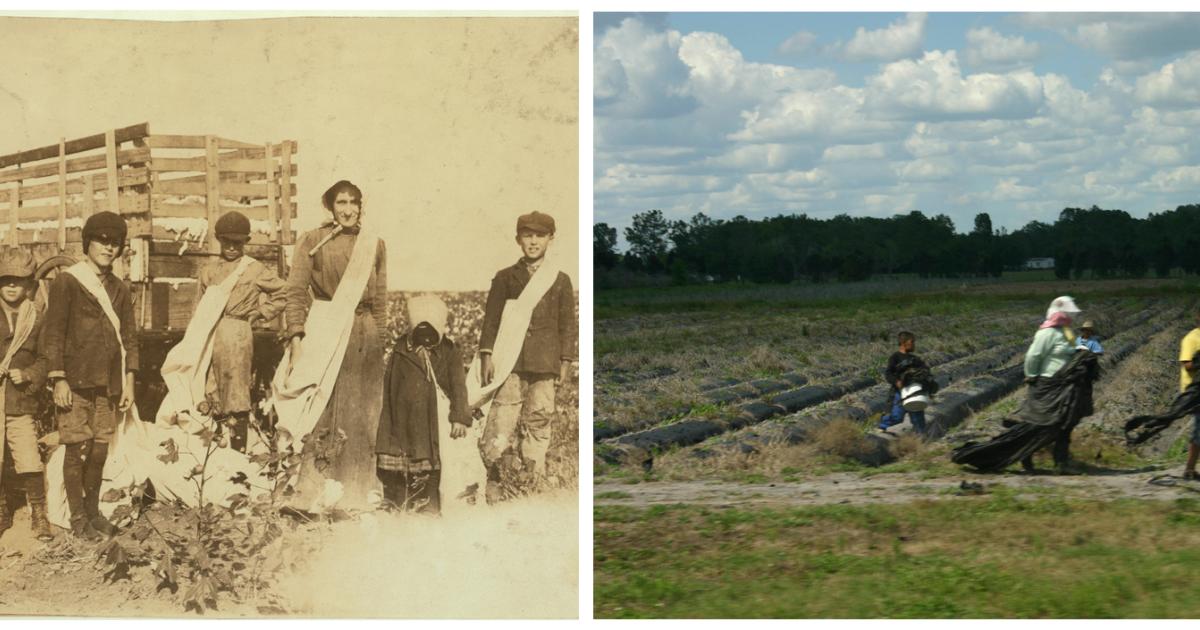Child labor is not just history, and it’s showing up in class

Child Labor: A Today Problem

Images of children working in dimly lit mills or smudged with dirt as they harvest cotton under the blazing sun are a thing of the past—at least that’s what most people believe. But a recent panel discussion described how child labor is a “today problem” and it’s on the rise. On Oct. 9, the Albert Shanker Institute gathered labor experts and child advocates to explore today’s version of labor exploitation among children and discuss real solutions to address it.
Introduction
Educators, healthcare providers, and public employees who interact with children play a crucial role in addressing this growing problem since they see children every day. The panel included tips on how to recognize signs of child labor and steps to protect children from harm.
Child Labor 101
Child labor is not to be confused with “good first jobs,” which can range from bagging groceries to helping out on the family farm. These positions give young people the opportunity to develop valuable skills and prepare them for future careers. However, when labor laws are bent and broken, problems arise. Child labor laws state that children must be at least 14 years old to work, with a few exceptions. Depending on their age, they should not work late at night or exceed certain hours per week when school is in session. Most importantly, children are prohibited from taking hazardous jobs, such as work in manufacturing and processing plants.
Despite these laws, the Department of Labor has found more than 15,000 children employed in violation of federal child labor law. The number of illegally employed children has risen by 88 percent since 2019, and in 2023, more than 500 children were employed in hazardous occupations. Child labor is not a problem of the past—it is a problem today.
Recognizing the Signs
Clear signs of possible child labor violations often show up in classrooms, school nurse stations, or healthcare facilities. Educators might notice signs such as frequent absences, tardiness, sleepiness, sudden drops in grades, loss of focus, or evidence of injuries like burns, cuts, and bruises. If child labor violations are suspected, individuals can call the Wage and Hour Division to report the situation. Holding employers accountable is crucial in breaking the cycle of child labor.
Addressing the Problem
Legislation can make a difference in combating child labor. Some states have weakened child labor laws, putting children at risk. Additionally, school vouchers, which erode compulsory school attendance, contribute to the problem. Supporting the Children Harmed in Life-Threatening or Dangerous (CHILD) Labor Act, a federal proposal that increases penalties for violations, including criminal penalties, can help address the issue. It is also important to advocate for funding for agencies that regulate violations, allowing investigators to effectively do their work. A nationally coordinated effort is needed to protect the rights of children in the policy arena.
SDGs, Targets, and Indicators
SDGs Addressed or Connected to the Issues Highlighted in the Article:
- SDG 4: Quality Education
- SDG 8: Decent Work and Economic Growth
- SDG 10: Reduced Inequalities
- SDG 16: Peace, Justice, and Strong Institutions
Specific Targets Under Those SDGs Based on the Article’s Content:
- SDG 4.4: By 2030, substantially increase the number of youth and adults who have relevant skills, including technical and vocational skills, for employment, decent jobs, and entrepreneurship.
- SDG 8.7: Take immediate and effective measures to eradicate forced labor, end modern slavery and human trafficking, and secure the prohibition and elimination of the worst forms of child labor, including recruitment and use of child soldiers, and by 2025 end child labor in all its forms.
- SDG 10.7: Facilitate orderly, safe, regular, and responsible migration and mobility of people, including through the implementation of planned and well-managed migration policies.
- SDG 16.2: End abuse, exploitation, trafficking, and all forms of violence against and torture of children.
Indicators Mentioned or Implied in the Article:
- Number of children employed in violation of federal child labor law
- Percentage increase in the number of illegally employed children
- Number of children employed in hazardous occupations
- Number of child labor violations reported and investigated
- Number of child labor violations resulting in penalties or criminal charges
- Level of funding for agencies that regulate child labor violations
Table: SDGs, Targets, and Indicators
| SDGs | Targets | Indicators |
|---|---|---|
| SDG 4: Quality Education | Target 4.4: By 2030, substantially increase the number of youth and adults who have relevant skills, including technical and vocational skills, for employment, decent jobs, and entrepreneurship. | – |
| SDG 8: Decent Work and Economic Growth | Target 8.7: Take immediate and effective measures to eradicate forced labor, end modern slavery and human trafficking, and secure the prohibition and elimination of the worst forms of child labor, including recruitment and use of child soldiers, and by 2025 end child labor in all its forms. | – Number of children employed in violation of federal child labor law – Percentage increase in the number of illegally employed children – Number of child labor violations resulting in penalties or criminal charges |
| SDG 10: Reduced Inequalities | Target 10.7: Facilitate orderly, safe, regular, and responsible migration and mobility of people, including through the implementation of planned and well-managed migration policies. | – |
| SDG 16: Peace, Justice, and Strong Institutions | Target 16.2: End abuse, exploitation, trafficking, and all forms of violence against and torture of children. | – Number of child labor violations reported and investigated – Level of funding for agencies that regulate child labor violations |
Source: aft.org








